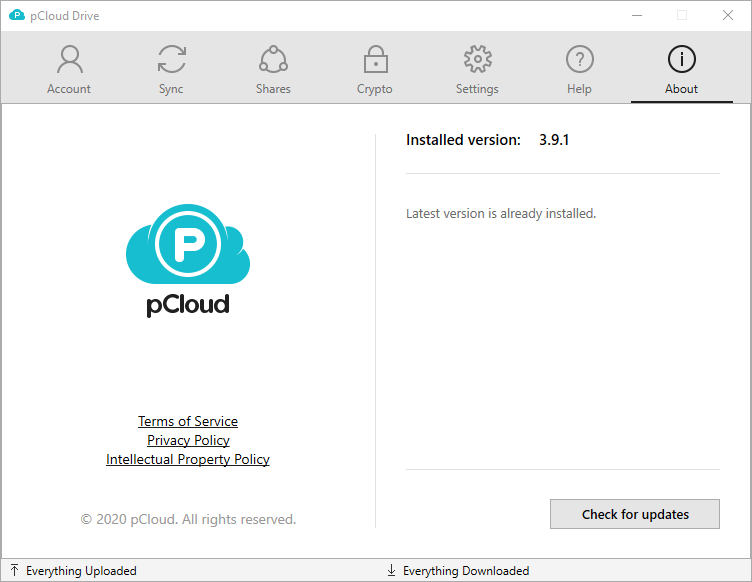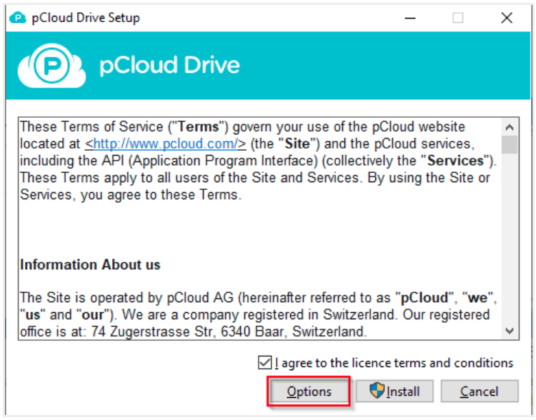


CHANGE PCLOUD DRIVE DRIVE LETTER HOW TO
How to Change a Drive Letter on Windows 10 and 11 Using Disk Management The change happens right away and you’ll see it reflected in File Explorer and throughout the Windows 11 experience. The new drive letter will take effect and will display with the letter you selected for it. In this example, we’re changing an external USB drive from F to D. Choose the letter you want to use from the menu and click OK.

When the Change Drive Letter window appears, click the dropdown menu.Under the Volume Data section, click the Change drive letter button.In the Disks & volumes section, scroll down and click the drive you want to change.Scroll down the Storage section, expand the Advanced storage settings option, and click on Disks & volumes.When Settings opens, navigate to System > Storage.Click the Start button and choose the Settings icon.With that in mind, changing a drive letter on Windows 11 is a straightforward process if you’re using the Settings up. Changing the main drive letter will result in Windows not booting, and apps won’t run at all. First, you shouldn’t try to change your local C: drive letter, as it’s where Windows and most of your apps run from. Change a Drive Letter on Windows 11 via Settingsīefore you change a drive letter on Windows, there are a couple of things to note about this process. The reason for this is that your computer needs some space to perform certain operations and processes, and if it doesn’t have this space, it may malfunction.Whether it’s an external or internal storage drive, you can change a drive letter on Windows 11 or Windows 10 using the steps below. This is the amount of hard drive space pCloud Drive will always leave untouched and will not use for cache.īe careful when you toggle this setting – we recommend that you do not set it lower than 2048 MB. In your pCloud Drive settings, there is a field that specifies a minimum disk space value. What is the “Minimum Disk Space” setting? Assign the new location of your cache folder and apply your changes.Go to Settings > Disk usage and click on Choose cache location.Double-click on the pCloud Drive app to open the Preferences menu.You can also change the cache location so it’s stored anywhere on your local hard disk but, we encourage caution with this action. On MacOS and Linux, the cache is stored in ~/.pcloud/Cache/. The default cache folder location depends for Windows is %LOCALAPPDATA%\pCloud\Cache\. Your pCloud Drive cache is stored in different places on different operating systems: Cached versions of files are kept until the overall cache size is reached – and when it is, the newer files overwrite the older ones of the cache (please note that this does not impact the actual files in the cloud but just their cached versions!). That depends on how actively you use your pCloud Drive app. Again, we recommend that you don’t go lower than 5,120 MB. If you work with large files, you may even want to increase the cache size but if you operate with small files – say, text documents or smaller photos, you may decrease the value of this setting. Keep in mind that the size of the files you work with is a factor here. If you need, you can change that setting to a lower or larger value from the pCloud Drive settings. The minimum cache space we recommend for pCloud Drive is 5,120 MB – this is the cache size, at which your app will maintain its optimal performance. No cache is used when you use the web version of pCloud, my. The cache is only utilized for uploading and downloading files to and from pCloud Drive – but not when you’re syncing files or folders. Your pCloud Drive desktop app utilizes the cache so it can perform faster and better. Yes (but you already knew that from the example above, didn’t you). In other words, the cache helps your computer remember a certain task rather than learn to perform it every time if needs to perform the same task. This happens because the file is cached on your local machine and doesn’t need to downloaded from the cloud again. You double-click the file and it opens immediately. You then close the file but remember you forgot to make an edit in it, so you need to open it again. It takes some short amount of time for the file to reach your computer from the cloud (most often, that time is just a second or two but can be longer for very large files). The file is not stored locally – it’s kept in the cloud. Let’s give you an example: you open a file from your pCloud Drive. The purpose of using a cache is so data can be served faster. In computing, the cache is a place to store something temporarily. In this short article, we’ll try to explain this in simple terms and address the most frequently asked questions about it. Often, we get asked what is a cache and how does it work. What is the “Minimum Disk Space” setting?.


 0 kommentar(er)
0 kommentar(er)
